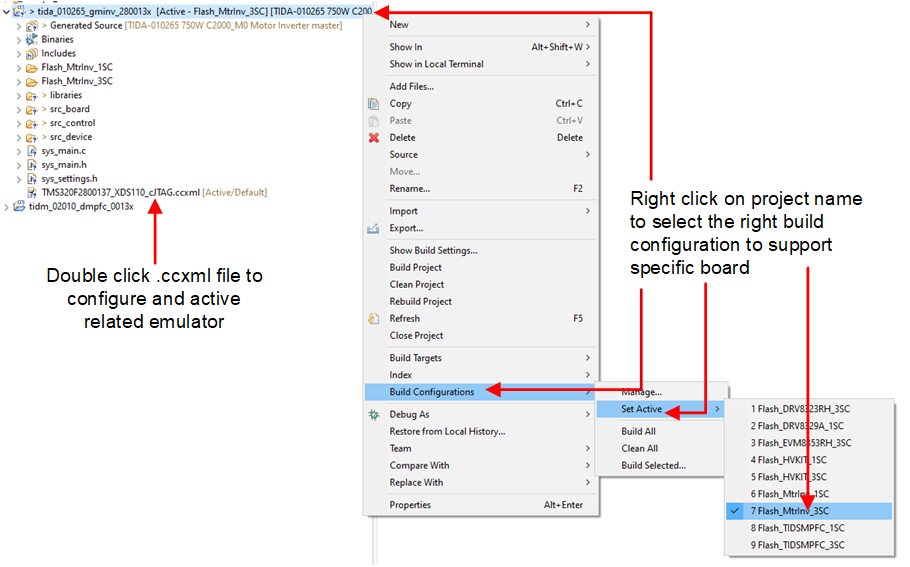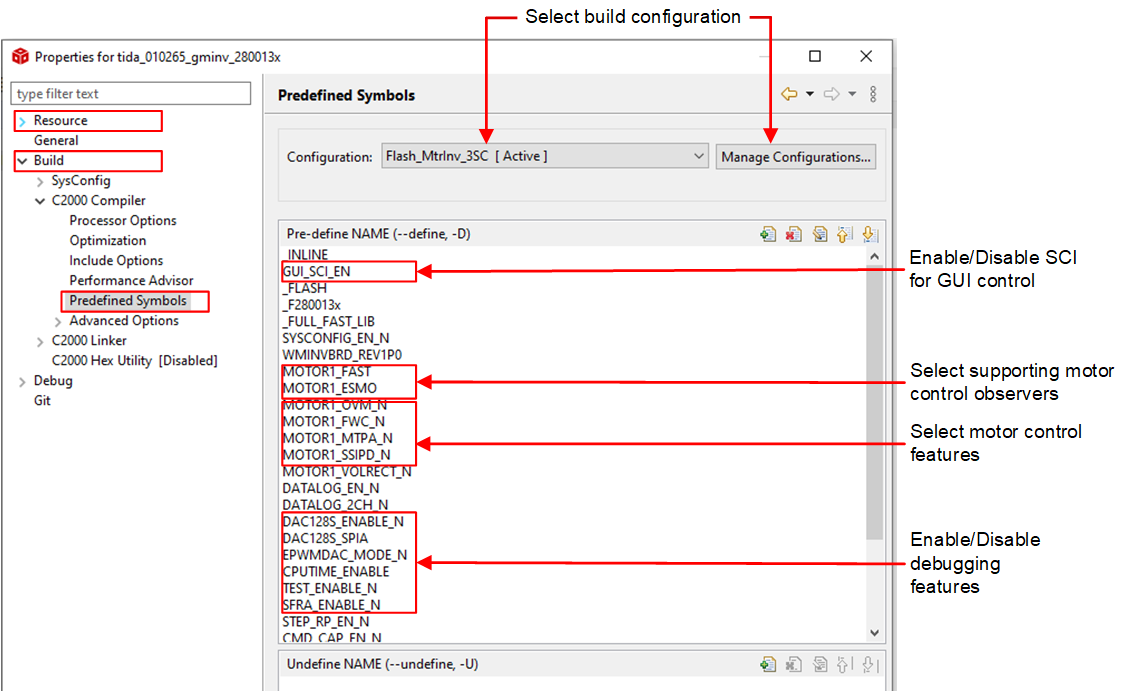TIDUF60 December 2023
- 1
- Description
- Resources
- Features
- Applications
- 6
- 1System Description
-
2System Overview
- 2.1 Block Diagram
- 2.2 Design Considerations
- 2.3 Highlighted Products
- 2.4 System Design Theory
-
3Hardware, Software, Testing Requirements, and Test Results
- 3.1 Getting Started Hardware
- 3.2 Getting Started GUI
- 3.3
Getting Started C2000 Firmware
- 3.3.1 Download and Install Software Required for Board Test
- 3.3.2 Opening Project Inside CCS
- 3.3.3 Project Structure
- 3.3.4 Test Procedure
- 3.4 Test Results
- 3.5 Migrate Firmware to a New Hardware Board
- 3.6 Getting Started MSPM0 Firmware
- 4Design and Documentation Support
- 5About the Author
3.3.2 Opening Project Inside CCS
<install_location>\solutions\tida_010265_wminv\f280013x\ccs\motor_controlImport the project within CCS and select the right build configurations by right-clicking on project name as shown in Figure 3-18. Select the right build configuration for the HVAC reference design. The Flash_MtrInv_3SC build configuration supports the three-shunt current sensing method, Flash_MtrInv_1SC supports the single-shunt current sensing method.
Configure the project to select the supporting functions in the project by clicking Project → Import CCS Projects, and browse to <install_location>\solutions\tida_010265_wminv\f280013x\ccs\ for F280013x based reference design, and then right-click on the imported project name, click Properties command to set the pre-define symbols for the project as shown in Figure 3-19.motor_control
 Figure 3-18 Select the Correct Build Configurations
Figure 3-18 Select the Correct Build Configurations Figure 3-19 Select the Correct Predefined Symbols in Project Properties
Figure 3-19 Select the Correct Predefined Symbols in Project Properties